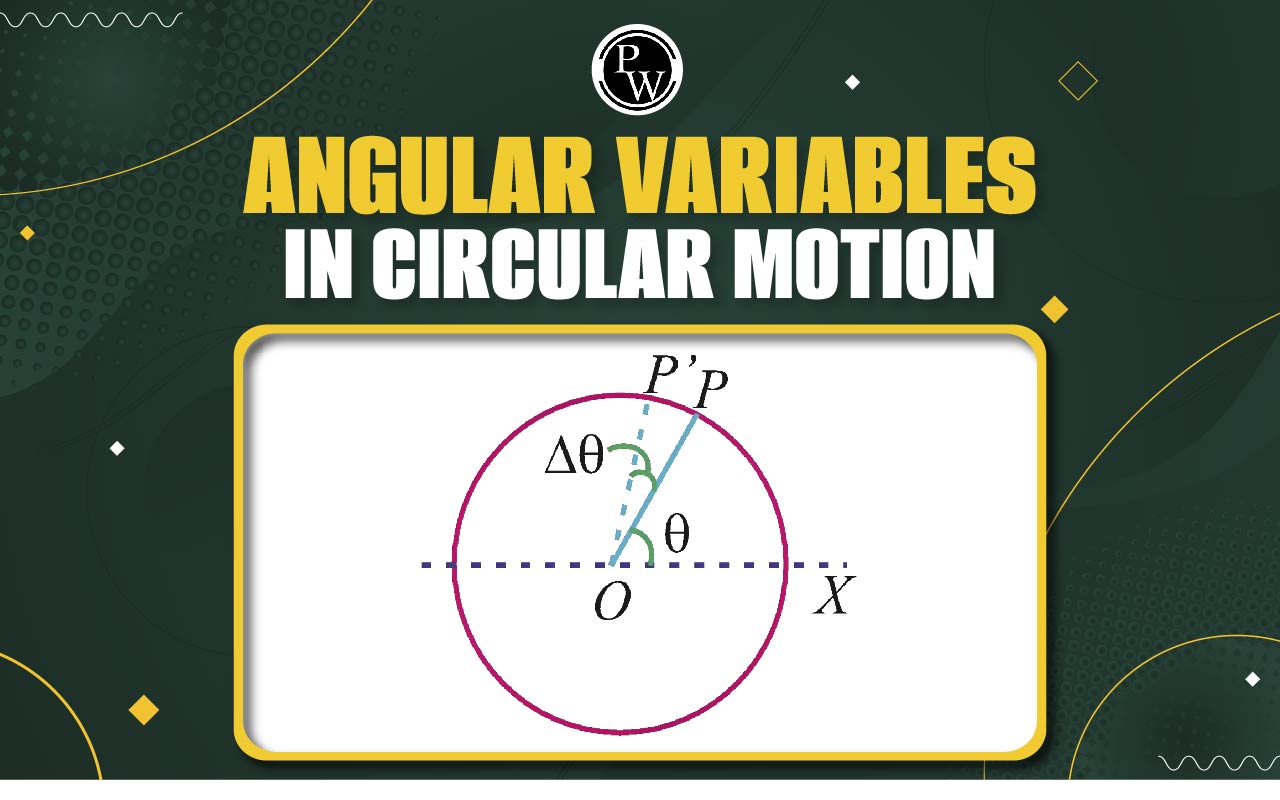

Angular variables In Circular motion
Angular variables in Circular motion : We will study and explore the some variables such as angular velocity and centripetal acceleration for circular motion. We will begin with the kinematics of circular motion and go on to study the dynamics of uniform and non-uniform circular motion and learn that if a particle moves in a circle of radius r with a constant speed v, its acceleration is v 2 /r directed towards the centre.
This acceleration is called centripetal acceleration. Note that the speed remains constant, the direction continuously changes and hence the “velocity” changes and there is an acceleration during the motion. In this chapter, we will study circular motion and see how force is involved in creating a curvilinear path. We shall then learn to apply Newton's laws to objects traveling in circular paths and thus derive expression for centripetal acceleration.Uniform And Non-uniform Circular Motion
A particle is in uniform circular motion if it travels around a circle or a circular arc at constant (uniform) speed. When the speed of the particle varies with time, we call it “non-uniform circular motion". In physics is defined acceleration as a change in velocity, not a change in the speed (contrary to the everyday interpretation). In circular motion, the velocity vector is always changing in direction, so there is indeed acceleration.
Important Terminology Related To Circular Motion
In linear kinematics we studied position, displacement, velocity, and acceleration. Now we will learn about these with reference to circular motion. Angular position: To decide the angular position of a point in space we need to specify (i) origin and (ii) reference line. The angle made by the position vector w.r.t. origin, with the reference line is called angular position. Suppose a particle P is moving in a circle of radius r and centre O.
The angular position of the particle P at a given instant may be described by the angle between OP and OX. This angle θ is called the angular position of the particle. Angular displacement: Angle through which the position vector of the moving particle rotates in a given time interval is called its angular displacement.
Angular displacement depends on origin, but it does not depend on the reference line. As the particle moves on above circle, its angular position α changes. Suppose the point rotates through an angle ∆θ in time, ∆ t , then ∆θ is angular displacement.
Angular variables
Suppose a particle P is moving in a circle of radius r Let O be the centre of the circle. Let O be the origin and OX the X-axis. The position of the particle P at a given instant may be described by the angle θ between OP and OX. We call θ the angular position of the particle. As the particle moves on the circle, its angular position θ changes.
Suppose the particle goes to a nearby point P′ in time ∆t so that θ increases to θ + ∆θ. The rate of change of angular position is called angular velocity. Thus, the angular velocity is ω.
∆ s = r ∆θ
orAcceleration In Circular Motion: Tangential And Radial Acceleration
Acceleration In Circular Motion : In circular motion, the acceleration of the particle can be resolved into two components one along the radius and one along the tangent to its path. The component along the radius is called normal acceleration or radial or centripetal acceleration. The component along the tangent direction is called tangential acceleration.
Centripetal acceleration
Centripetal acceleration : It is responsible for change in direction of velocity. In circular motion, there is always a centripetal acceleration. Centripetal acceleration is always variable because it changes in direction. Centripetal acceleration is also called radial acceleration or normal acceleration.
Tangential acceleration
Tangential acceleration : When a particle moves in a curve, the magnitude of its velocity, that is, speed of the particle may change. Since the velocity changes its magnitude along the tangent to the path, the rate at which the magnitude of velocity changes along the tangent is called tangential acceleration..
Finding Centripetal Acceleration
Finding Centripetal Acceleration : Consider a particle which moves in a circle with constant speed v as shown in figure. When the particle describes (revolves) an angle θ, its velocity vector rotates through same angle θ. During this time let the velocity change from,
Let us find the direction of this acceleration. As we have taken very short time interval (∆t → 0). During this interval θ tends to zero (∆θ → 0),
rotates towards
. Consequently.
tends to be perpendicular to
. Since
is tangential,
must be radially inward as shown in figure. It means
is directed towards the centre of the circle. Then,
where
= unit vector of position vector
.
The above acceleration is known as centripetal or normal or radial acceleration. It arises from the change in direction of velocity of particle. As
changes its direction with respect to time, centripetal acceleration must change its direction.
Important Points
- The centripetal acceleration or normal acceleration or radial acceleration is given by.
- Here we have derived the formula of centripetal acceleration under condition of constant speed, the same formula is applicable even when speed is variable.
- In uniform circular motion, the speed of the particle is constant. Its tangential acceleration should be zero,
- Differentiation of speed gives tangential acceleration.
-
Differentiation of velocity
gives total acceleration.
Angular variables in Circular motion FAQs
Q.1: Acceleration is change in__________
Q.2: The unit of centripetal acceleration is _____
Q.3: Does centripetal acceleration and the centripetal force have the same direction?
Q.4: For circular motion of earth around the sun, centripetal force is provided by_________












